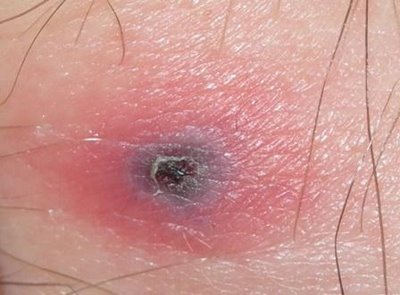Human ehrlichiosis

What is Human Ehrlichiosis and Ehrlichia Bacteria
Human ehrlichiosis - Any of several illnesses resulting from INFECTION with various species of Ehrlichia BACTERIA. Human ehrlichiosis infection spreads via tick bites. The tick species and the Ehrlichia species vary by geographic region. Ehrlichia bacteria infect white BLOOD cells. The two main forms of human ehrlichiosis in the United States are human granulocytic ehrlichiosis (hGE), in which the infection involves granulocytes (primarily neutrophils), and human monocytic ehrlichiosis (hME), in which the bacteria infect monocytes and macrophages. hME is about twice as common as hGE.
Sypmtoms of Human Ehrlichiosis
The INCUBATION PERIOD for human ehrlichiosis is 5 to 10 days, after which symptoms appear that are flulike in nature. Symptoms may include
- FEVER
- HEADACHE and general sense of not feeling well (malaise)
- JOINT PAIN and MUSCLE aches
- NAUSEA, VOMITING, and DIARRHEA
The diagnostic path includes blood tests to evaluate blood cell counts. The bacteria are also apparent with microscopic examination of a blood sample. Ehrlichia bacteria are highly sensitive to doxycycline, an antibiotic in the tetracycline family of ANTIBIOTIC MEDICATIONS. Because blood test results may take a week or longer, responsiveness to antibiotic therapy is often a diagnostic measure. People who have human ehrlichiosis show marked improvement in symptoms within 24 to 36 hours of beginning doxycycline treatment. Most people recover fully with appropriate treatment. Though some people develop mild illness with few symptoms and fully recover without treatment, untreated human ehrlichiosis can become very serious very quickly because the attack on the white blood cells compromises immune function.
The risk for Ehrlichia infection in the United States is highest during the summer months (May through October) when people are hiking and camping in areas where ticks thrive. Measures to prevent tick bites include wearing protective clothing (such as long pants tucked into socks) or using an appropriate insect repellent and checking the SKIN carefully for ticks or signs of bites after being in wooded areas.
See also GRANULOCYTE; MACROPHAGE; MONOCYTE; ROCKY MOUNTAIN SPOTTED FEVER.